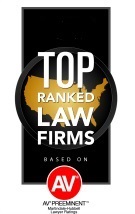California’s Expanded COVID Supplemental Paid Sick Leave
Authors: Employment Law Team
NEW CA SICK LEAVE LAW SIGNED IN MARCH, RETROACTIVE TO JANUARY 1, 2021
As of March 29, 2021, a new law in California, SB 95, went into effect which provides new and supplemental paid sick leave for COVID-related leaves from work. This new law has three new components of which employers should be aware:
- The new law covers businesses with more than 25 employees.
- The new law allows employees to take COVID-19 supplemental sick leave for new purposes, including for vaccinations.
- The new law applies retroactively (requiring employers to compensate certain employees who previously took unpaid leave for a COVID-19 reason) and includes specific notice requirements which require an adjustment to an employee’s itemized wage statement.
In 2020, the Federal government passed the Families First Coronavirus Response Act (FFCRA), which provided supplemental paid sick leave benefits to workers affected by COVID-19 who worked for employers with fewer than 500 employees. The FFCRA expired at the end of 2020, thus leaving many employees throughout CA without COVID-related supplemental sick leave. SB 95 not only filled that gap but now covers employers who have more than 25 employees.
The new CA sick leave law provides paid sick leave benefits to employees unable to work or telework due to one of the following qualifying reasons:
- Caring for Yourself: The employee is subject to quarantine or isolation period related to COVID-19, has been advised by a healthcare provider to quarantine, or is experiencing COVID-19 related symptoms and seeking a medical diagnosis.
- Caring for a Family Member: The employee is caring for a family member subject to a COVID-19 quarantine or isolation period or has been advised by a healthcare provider to quarantine due to COVID-19, or is caring for a child whose school or place of care is closed or unavailable due to COVID-19 on the premises.
- Vaccine-Related: The employee is attending a vaccine appointment or cannot work or telework due to vaccine-related symptoms.
The amount of COVID-19 supplemental paid leave time is based upon the number of hours worked by the employee and is in addition to any paid sick leave the employee is entitled to under other applicable state and/or federal statutes. Specifically, full-time employees are generally entitled to 80 hours of COVID-19 supplemental paid leave time if the employee worked or was schedule to work, on average, at least 40 hours /week in the two weeks preceding the need for the leave. Part-time employees are generally entitled to the number of hours the employee is normally schedule to work over a two weeks. If the part-time employee has a variable schedule, the amount of COVID-19 supplemental paid leave time is equally to 14 times the average number of daily hours worked over the past 6 months.
COVID-19 supplemental paid leave time is capped at $511 per day and $5,110 in the aggregate, but subject to that cap another formula is required to determine the rate of pay during the COVID-19 related sick leave.
Finally, the law applies retroactively to January 1, 2021, and sunsets on September 30, 2021. This means that an employer would have to compensate an employee who took unpaid time off before the enactment of SB 95, provided the time off was because of a covered reason.
Please remember that the hours available for this new paid leave must also be reflected on an employee’s itemized wage statement. Specifically and effective immediately, covered employers must update an employee’s itemized wage statement to list, separate from regular paid sick time, the number of hours available for COVID-19 supplemental paid leave time. Further, the new law requires covered employers to post this notice in their workplace, or if employees don’t frequent the workplace the notice should be disseminated via electronic means.
The vaccination effort and overlapping benefits have raise many questions for employers as they navigate whether and when to have their employees start to return to work at non-remote work spaces. SWSS’ employment team looks forward to assisting you with any questions or concerns you may have with respect these dynamic changes.


